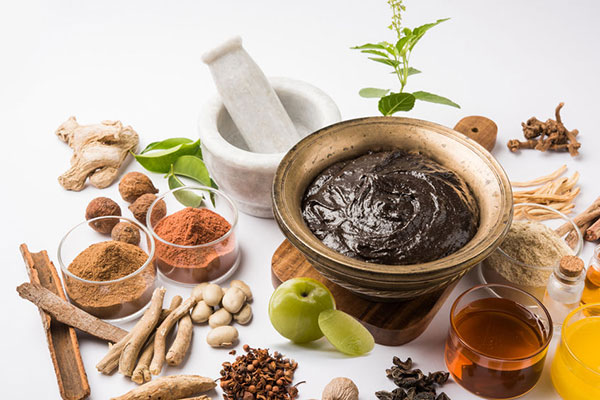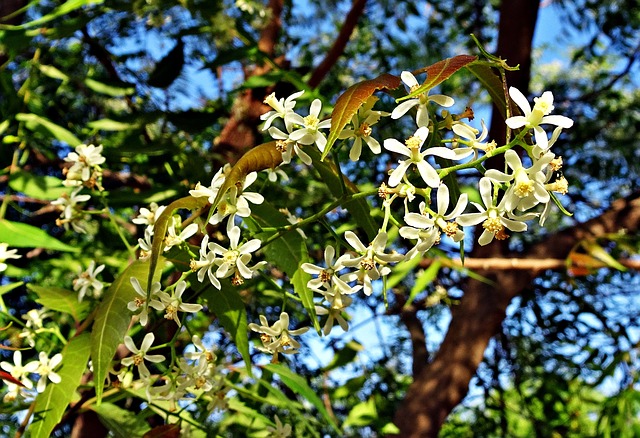
Copyright: espies / 123RF Stock Photo
Today more than ever, consumers are taking health into their own hands by looking for natural products that can help them treat or prevent specific conditions. At the same time, consumers have growing interests in the sustainability of the ingredients in these products.
Fitting this description are medicinal herbs, particularly Ayurveda-derived dietary supplements and products, which are gaining steam due to the growing recognition of these products as safe remedies and approaches to preventative healthcare.
As the awareness of Ayurveda increases in the western society, so will consumer demand for Ayurvedic herbs, which according to Research and Markets, is expected to grow at a CAGR of around 16% through 2025.1
What are Ayurveda herbs?
Ayurvedic medicine (also called Ayurveda) is an ancient medical system that originated in India millennia ago and remains one of the country’s traditional healing systems.
The term “Ayurveda” combines the Sanskrit words “ayur,” meaning life and “veda,” meaning science or knowledge.
Ayurveda uses a holistic approach to health and disease using a variety of herbal compounds and other practices to promote good health.
One of the central tenets behind Ayurveda is that disease, aging and stress cause the body to fall out of balance causing it to be more susceptible to disease, aging and stress. Ayurvedic herbs are said to restore this balance and help the body maintain a natural healthy state.2
Ayurvedic formulas typically combine plants that work synergistically to bring balance to specific body system. For example, Triphala – a combination of three fruits, Amia (Emblica officinalis), Bibhitaki (Terminalia bellerica), and Haritaki (Terminalia chebula) – is a common formulation in Ayurveda that is suggested to improve digestion.
These ingredients may be standardized or whole herb products, which is the more traditional approach.
Need herbal ingredients for your formulation?
From teas, to extracts, to flavorings, UL Prospector® has listings for thousands natural herbal materials from global suppliers. Find technical information, order samples, and contact suppliers in our materials search engine.
Search herbal materials
Acceptance of Ayurvedic herbs
In the United States, Ayurveda is considered a form of complementary and alternative medicine as it’s not widely studied as part of conventional medicine.
Despite this, interest in the botanicals that play a major role in the Ayurvedic tradition is seeing an upward trajectory in the west. Contributing to this growth is an increase in consumer awareness of Ayurveda and its holistic approach to health.

Neem, holy basil, Bacopa moniere and Ashwagandha have become the cornerstones of the Ayurvedic movement in U.S health food stores. These herbs have research supporting their health benefits, and Ashwaganda shows particular promise – from decreasing anxiety to energy production and even anti-cancer properties.3, 4
Unfortunately, the increasing demand for natural products in the market has led to manufacturers using cheaper sources of raw materials or adulteration of the natural products. For example, natural curcuminoids are often adulterated with synthetic curcumin.
To combat species identification, there are plenty of resources to work with including monographs from EU, US and British Pharmacopoeia.
The segment should also ensure that products do not contain impurities. As such, Ayurvedic herbs have seen negative press regarding contamination with heavy metals.5
Cognizant of these consumer concerns, manufacturers continue to focus on validating therapeutic benefits and the quality of their Ayurveda products in order to gain consumer acceptance.
Up and comers
The Ayurvedic market has many applications for which products can be marketed in accordance with appropriate federal regulations.
These include: skin health, heart health, blood glucose control, mental health, nervous system disorders and respiratory health.
Beyond targeted health, new science continues to drive interest in these herbs for many new categories, such as sports nutrition, weight management and cognitive health, which represents new marketing opportunities for ingredient suppliers and product developers.
Use of Ayurvedic herbs in food and beverage products are also expected to keep growth for these ingredients on the rise.
References
- “Ayurvedic Market Analysis & Trends – Healthcare Products, Personal Care Products, Distribution Channel – Forecast to 2025.” Research and Markets – Market Research Reports – 2016.
- Chauhan A, Semwal DK, Mishra SP, Semwal RB. Ayurvedic research and methodology: Present status and future strategies. 2015; 36(4):364-369.
- Pratte MA, Nanavati KB, Young V, Morley CP. An Alternative Treatment for Anxiety: A Systematic Review of Human Trial Results Reported for the Ayurvedic Herb Ashwagandha (Withania somnifera). J Altern Complement Med. 2014; 20(12):901-908.
- Widodo N, Priyandoko D, Shah N, Wadhwa R, Kaul SC. Selective Killing of Cancer Cells by Ashwagandha Leaf Extract and its Component Withanone Involves ROS Signaling. PLOS One. 2010; 5(1):e13536.
- Patwardhan K, Pathak J, Acharya R. Ayurveda formulations: A roadmap to address the safety concerns. J Ayurveda Integr Med. 2017; 8(4):279-282.
The views, opinions and technical analyses presented here are those of the author or advertiser, and are not necessarily those of ULProspector.com or UL Solutions. The appearance of this content in the UL Prospector Knowledge Center does not constitute an endorsement by UL Solutions or its affiliates.
All content is subject to copyright and may not be reproduced without prior authorization from UL Solutions or the content author.
The content has been made available for informational and educational purposes only. While the editors of this site may verify the accuracy of its content from time to time, we assume no responsibility for errors made by the author, editorial staff or any other contributor.
UL Solutions does not make any representations or warranties with respect to the accuracy, applicability, fitness or completeness of the content. UL Solutions does not warrant the performance, effectiveness or applicability of sites listed or linked to in any content.



these Ayurveda techniques are way relaxing and stress releasing. you can improve your immunity level with the perfect dosage of supplements. you can buy shilajit and take it in perfect amount for better results.
Thank you for reading and your comments.
It is great blog post. I am Always read your blog. Helpful and Informative blog. Thanks for sharing these information with us.
Thanks For Sharing blog post about Ayurvedic Medicine
Thanks for the outstanding post. Your blog has proved the hard work and experience you have got about Ayurvedic Medicine.